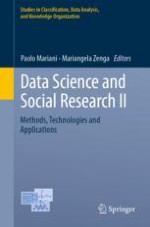The peer-reviewed contributions gathered in this book address methods, software and applications of statistics and data science in the social sciences. The data revolution in social science research has not only produced new business models, but has also provided policymakers with better decision-making support tools. In this volume, statisticians, computer scientists and experts on social research discuss the opportunities and challenges of the social data revolution in order to pave the way for addressing new research problems. The respective contributions focus on complex social systems and current methodological advances in extracting social knowledge from large data sets, as well as modern social research on human behavior and society using large data sets. Moreover, they analyze integrated systems designed to take advantage of new social data sources, and discuss quality-related issues. The papers were originally presented at the 2nd International Conference on Data Science and Social Research, held in Milan, Italy, on February 4-5, 2019.
